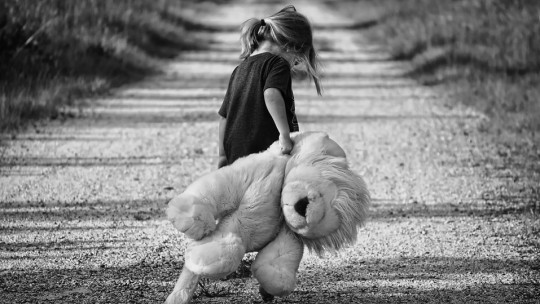
The death of a loved one It is an event that we all go through at some point in life, to which difficult emotions are associated and that can mark a before and after. A new chapter. A full stop.
The losses of our parents, grandparents or older siblings are part of a natural order dominated by time. Therefore, it is something that we must assume and be prepared to experience. Other times, however, there are unexpected, immeasurably painful losses (such as that of a child).
It is essential to consider that a passive attitude in the face of these circumstances usually leads nowhere, since there are a series of tasks that we must face in order to continue living and preserving the loving memory of those who have left.
In this article we will address the treatment of grief according to William Worden prestigious Doctor in Psychology whose contribution to this field has elevated him as an unavoidable reference for understanding the process to which we allude: transcending death (and life) while maintaining the capacity to be happy.
The treatment of grief according to William Worden
Many of the traditional descriptions of grief have understood the person going through it as a passive entity, subject to external forces that will trace a path along which they will simply wander without a compass or purpose. This way of perceiving this stage of life adds even more pain as it adds a component of uncontrollability to a sometimes arid and barren landscape.
The truth is that it is a vital process that involves enormous individuality, making it difficult to distinguish a linear succession of universal stages that every survivor will necessarily go through. So, It is impossible to establish a temporal criterion from which pain becomes clinically relevant It is a complex experience, irreducible to objective terms that are applicable to everyone.
The treatment of grief according to William Worden aims, for all this, to be sensitive and aware of this reality The author proposes a model of four phases in which extensive individuality is allowed, and in which the person must carry out a series of functions aimed at advancing on their path to integrate on an emotional level the memory of the absent loved one. . From this perspective, whoever survives a loss adopts an active and proactive role, in opposition to the classic vision.
The tasks to be satisfied would be, specifically: accepting the loss, protecting the emotion that is experienced, restoring balance by assigning roles and integrating the memory of the loved one into one’s own life. Let’s see in detail the phases that Worden proposed which constitute an approach frequently used in cases in which suffering becomes intense and prolonged.
1. Accept the reality of the loss
One of the first emotional reactions that arise after learning of the loss of a loved one is shock. It is a response in which very intense emotions emerge, which even compromise attention and/or memory for the episode (so the precise moment in which the event was certain may not be remembered later). Although this state makes emotional processing difficult at the beginning, it allows us to progressively assimilate the situation as time passes.
At the moment in which the person begins to orient himself, The common thing is to remain in a position of denial or disbelief This can last for several days; in which you think, feel and act as if the family member were present. All of this is more likely in cases in which death occurs completely unexpectedly, since when one has gone through a long-lasting illness, one tends to observe anticipatory grief (for which one has already traveled at least part of the way in the moment of death).
The integration of the loss must be carried out on two levels, and in an always progressive way: rational (assuming awareness of the events as they happened, giving more precise coordinates to the situation and its consequences) and emotional (contacting the affects that occur as a result of what happened).
At this stage there may be limited recognition to the intellectual, without the accompanying affects (feeling that the person would “still be there” if they went to visit their home). This situation usually surprises the survivor, who does not understand why “he doesn’t feel as bad as he expected.”
The practice of funeral rituals, which have existed since the dawn of humanity and depend on cultural reality (or the beliefs of the deceased on a spiritual level), have a basic function in this entire process: they allow us to record what happened and facilitate the meeting of those who suffer from a shared pain. This is one of the points at which the first gestures of genuine regret (condolences, crying, etc.) are most frequently observed. And it is the moment in which a tangible and formal farewell takes place.
In the days following this event, The grieving process can take many different forms In some cases the person needs to harbor the pain that accompanies them internally (which is why their appearance is taciturn and distant), while in others the desire to share feelings about the lost loved one is evident. The way of communicating is unique for each person, private and intimate. It is also the first station on the journey towards overcoming grief.
2. Elaboration of the pain of grief
Working through grief over the loss of a loved one is not a quick or simple process. Despite many weeks or months having passed, It is very possible that thoughts about it generate intense pain and tremendously difficult to cope with, so it is common for many people to try to distract themselves in order to overcome their suffering.
This way, they can dedicate more time to their work or other activities, relegating what happens inside to a second order of importance
There are not uncommon cases of families doing everything possible to avoid anything that reminds them of the deceased (removing photographs or building taboos about them) or in which the opposite occurs (as if silence on the matter banished it to cruel oblivion). . All of this is natural in the context of efforts to put together a puzzle with too many missing pieces, and each of the mourners has a unique way of approaching it. Even with everything, Sometimes conflicts may arise due to such discrepancy which we must resolve correctly to avoid additional discomfort.
The truth is that it is an emotional issue that sooner or later we will have to deal with. Facing it means recognizing and assuming that we will go through disparate and confusing internal states ; like anger, sadness or fear. They are all legitimate affects that are part of the baggage we have to overcome adversity, so it is key to stop and listen to them from a position of acceptance and with the necessary disposition to tolerate their presence.
This part of the process is the one that requires the investment of the greatest emotional effort, since during its development, personally relevant levels of sadness and anxiety arise, and even some organic problems (such as headaches, digestive disorders, etc.). Also It is very common for it to occur with difficulty sleeping and changes in appetite (ranging from lack of appetite to voracious hunger). For all these reasons, it is essential to guarantee self-care and ensure that you maintain your own health.
At this point in the process, It is crucial to seek the support of trusted people and understand that sometimes they too can feel frustrated when trying to alleviate (unsuccessfully) the grief of someone they consider important.
We must establish links that allow us to communicate and organize our inner life, which is possible when the interlocutor maintains active and patient listening. This help reduces the risk of suffering mental health problems associated with such a delicate moment.
Finally, It is necessary for the person to be aware of two situations that can worsen their grief: go to places where you used to meet with the deceased person and that specific dates are met (birthdays, Christmas, etc.). When the anniversary of the death arrives, a spontaneous worsening of pain may also occur. These are well-known circumstances, for which you must be properly prepared.
3. Adapt to a new world without your loved one
All families function as a system, so that each of its gears fulfills a specific purpose but is intertwined with the group’s activity. It could be said that Its members have complementary roles with respect to those of the others, so the dynamics that keep them together are subject to a balance or “social homeostasis”. When one of the pieces is missing, it is necessary to make adjustments aimed at enabling the continuity of life together.
Thus, the death of a loved one not only leaves an emotional void, but also It extends to everyday actions and customs The responsibilities attributed to him are now neglected, and will have to be resolved by other elements of the family unit. This process is not at all simple, especially when the deceased person was in charge of financial support or acted as a beacon that guided relational tensions towards the placid shores of consensus.
Furthermore, although it is easy to redistribute tasks among people in the family, sometimes feelings of anxiety or sadness can arise while they are carried out. This is because the action worsens the feeling of absence of the loved one, and at the same time displaces the contributions he made in life to a new dimension. This is why difficulties arise despite having the skills or the opportunity to successfully carry out all tasks.
This situation is usually experienced as a substantial adaptive challenge, although it also offers satisfaction and learning that contribute to improving the emotional state in a time of difficulty.
As you move through successive stages of grief, involvement in these new activities will no longer be perceived as a kind of substitution integrating the role of the deceased into all the family dynamics that arise from shared adversity.
4. Emotionally relocate the deceased loved one
The death of someone we love represents a break in the line of continuity on which we write the book of our existence, which makes it difficult to integrate it into the narrative that one makes of one’s own story.
This is why we understand a grieving process as “overcome” when the person is able to attribute a harmonious meaning to the life of someone who is no longer there Well, the truth is that the bonds between human beings are not diluted with death, but remain valid, transforming and acquiring new meanings.
The integration of the loved one into one’s own life implies the reorganization of everything that was shared with them within our individuality; reconciling all memories in the gentle flow of personal history. The distressing emptiness of the first months, experienced as a rupture in the fabric of one’s existence, takes on a recognizable form and allows one to move forward. That is why in the last stage the person redirects his gaze “outwards”, towards a life whose course never stops.
And the thing is that forgetting what is lost never comes. For when one life touches another life, it changes it forever. Even despite death.








